Each year, six million adult patients in the U.S. see their doctor because of chest pain. This pain may be caused by a variety of factors that may include diseases such as coronary artery disease, gastro-intestinal pain such as acid reflux (“Hiatal Hernia”), pain from your lungs (pneumonia, or a collapsed lung), “costochondritis” or physical injuries or a host of other factors.
Coronary artery disease
If your coronary arteries are unable to do their job properly because of blockages or other causes, you may experience chest pain known as angina pectoris. In severe cases, where the blood supply to the heart muscle is significantly disrupted, a heart attack may occur.
Heart Disease is the number one cause of death in the U.S. for both men and women. The symptoms of the various kinds of heart disease depend on the seriousness of the problem. Silent Ischemia refers to a form of heart disease with mild or unnoticeable symptoms.
Angina Pectoris is a sensation of tightness or pressure in the chest area that is experienced during periods of physical exertion or emotional stress. The pain may cease when the exertion stops or the distress is relieved. If it does not, then it should be seen as an indication of more serious heart disease and the increased risk of heart attack. The pain of a heart attack lasts longer than that of Angina, though it may be less severe. It is often described as a “crushing” pain in the center of the chest. The pain may also spread to the neck, shoulders, or arms and be associated with perspiration, a feeling of dizziness or lightheadedness, and shortness of breath.
Chest pain that persists for more than a few minutes or that recurs frequently should be taken seriously as a potential sign of a heart attack.
In all, a heart attack may last for hours, during which the heart sustains progressive damage. However, only about 10-15% of patients who enter hospitals in the U.S. complaining of chest pain turn out to have a form of heart disease.
Gastro-intestinal pain such as acid reflux (“Hiatal Hernia”)
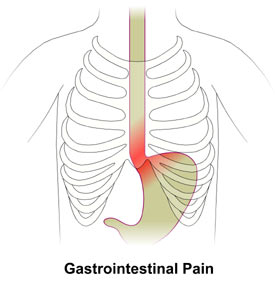 Symptoms of acid reflux and spasm of the esophagus can be uncomfortable and are often misdiagnosed as angina type of pain and vice versa. Usually, it is relatively easy to relate GI pains to food intake or the acid or bile taste in your mouth. Most everybody has episodes of acid reflux on occasion, and about 50% of us have a Hiatal Hernia that never causes any trouble. Once diagnosed however, it becomes easy to get labeled as such and often all symptoms. Angina is occasionally misinterpreted as acid reflux, especially in women, who have often atypical symptoms. Esophageal spasms are more easily confused with angina type of pains, and occasionally are only diagnosed after coronary artery disease has been excluded.
Symptoms of acid reflux and spasm of the esophagus can be uncomfortable and are often misdiagnosed as angina type of pain and vice versa. Usually, it is relatively easy to relate GI pains to food intake or the acid or bile taste in your mouth. Most everybody has episodes of acid reflux on occasion, and about 50% of us have a Hiatal Hernia that never causes any trouble. Once diagnosed however, it becomes easy to get labeled as such and often all symptoms. Angina is occasionally misinterpreted as acid reflux, especially in women, who have often atypical symptoms. Esophageal spasms are more easily confused with angina type of pains, and occasionally are only diagnosed after coronary artery disease has been excluded.
Pain from your lungs
If there is a problem with your lungs, it is usually associated with other complaints such as shortness of breath, cough or pain on deep breathing. A pulmonary embolism (blood clot to the lungs) can mimic an angina or heart attack and should therefore be part of any evaluation in someone with acute pain. It can be diagnosed if there is a history of thrombosis elsewhere or a major operation (Hip replacement or pelvic operation) has been performed recently.
The other possibilities, musculoskeletal, costochondritis or physical injuries can be diagnosed by local examination and are usually easily differentiated from the more serious problems I mentioned above.
Hope this helps,
Dr T

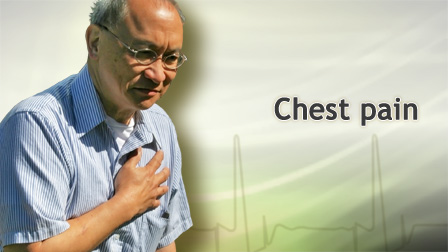
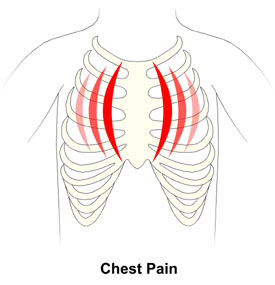
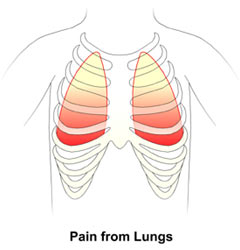
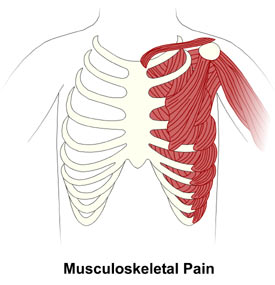
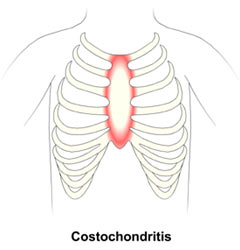
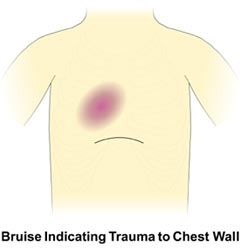
Comments 1
http://alexandra-lifewithdignity.blogspot.com/
about ESOPHAGUS SPASMS